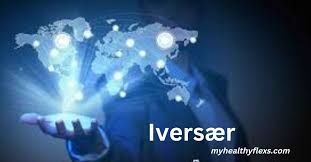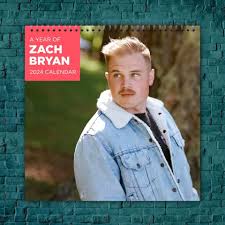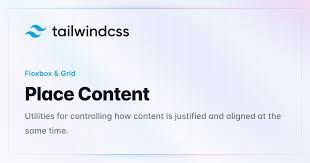.Content marketing allows you to attract customers without advertising. We tell you which companies it is suitable for and how to implement it without unnecessary expenses and mistakes.
Content Marketing Tasks
Differences between content marketing and other communication formats
Who needs content marketing and who doesn’t
Where to place content
Content types
1.How to attract readers
2.How to think through a content plan
3.How to choose content
4.How to Start Content Marketing
5.Evaluating the effectiveness of content marketing
6.Expert advice
Content Marketing Tasks
Table of Contents
Content marketing is the promotion of a company, its products and services through content: articles, posts on social networks, videos, newsletters.
What tasks a company will solve with the help of content depends on its marketing strategy . Here are some options:
1. Show expertise
If a company talks about its work in the media, its employees hold webinars, and its blog publishes useful articles, this increases trust in the brand and creates the impression in the audience that the company employs professionals.
2. Generate demand
Even a quality product is hard to sell if it is unfamiliar to users or difficult to understand. Let’s say a company releases a platform for developing applications without code, and businessmen are used to using a ready-made CRM . Cases, webinars and demos will help explain the advantages of the solution.
3. Increase sales
Articles attract traffic to the site, the more visitors, the higher the chances of a purchase. In addition, calls to action are added to the materials: leave a request or place an order. But more often the influence is indirect: people read the article, leave, think, and then may return and buy the product.
4. Retain customers
To ensure that customers continue to use the product, their LTV grows , remind them about the brand and maintain relationships – send useful guides, conduct educational webinars, giveaways and surveys on social networks.
To solve a problem, it is not enough to write a couple of texts. You need to be able to analyze the product and audience, develop and implement a content strategy, and evaluate the results of work in numbers. These skills can be acquired on the course “Content Marketer”.
Read Also:Everything You Wanted to Know About Mıllıeyt
Differences between content marketing and other communication formats
In Internet marketing, several methods are usually used to promote products and services, some of the popular ones, in addition to content marketing, are PR and advertising. Here is how they differ from each other.
Who needs content marketing and who doesn’t
Content marketing requires investment and is not suitable for all companies. Whether to use it or not depends on several conditions.
✅ Will benefit business
Other marketing channels have been developed
The company uses advertising and other tools that are aimed at people who are ready to buy the product. It is necessary to expand the funnel to potential customers.
The company has a complex, new, or expensive product
People don’t understand why they need it or why they should pay so much for it. These products are difficult to sell with a single landing page or ad. You’ll need to explain the value proposition.
It is necessary to form a reputation in the market
Let’s say the company is a startup that is not yet trusted, or works in the B2B direction, where it is difficult to sell through advertising. Another reason is a competitive niche. In online education, articles from experts and stories of graduates will show the quality of courses.
❌ Will be ineffective
Local business
For example, a cafe or hairdresser near your home. People who live far away will not use the services of such establishments, even if you have an interesting blog. Advertising, for example, in Yandex.Maps, will work better.
The company sells simple, inexpensive goods
If the product description is enough to buy, or these are everyday goods, service, prices, and assortment are more important than information. There is no point in explaining in an article how light bulbs work or why a buyer needs disposable tableware.
There are shortcomings in the processes or product
It happens that the company does not have a sales department and the manager does not have time to process all the requests. Or technical support responds in a week, and the application has many bugs . Then people read brand media with interest, but buy the product from competitors.
Where to place content
Let’s look at the main platforms and how they work to attract new clients:
● Blog on your own website
Usually, cases, useful articles and answers to users’ questions are published in the blog. This way, you get additional traffic to the site and a good entry point for subsequent sales.
● Brand media
is a magazine on a separate domain that attracts people who are not familiar with the company, but can become its clients. To do this, it must be useful to readers: entertain, educate and help solve problems.
● Social networks
help grow a community of potential customers and retain those who already use the product. If a company has several platforms, for example, VKontakte and Odnoklassniki accounts, it is advisable to create original content for each of them.
● Content mailing
differs from other types of mailings in its usefulness. In essence, it is a blog that comes to your email.
● Blog on external platforms
suitable for a quick start, just choose a resource with the right audience and create a company account. For example, Habr and Vc.ru are popular in the IT sphere. The downside is that they all have their own rules: you need to comply with the requirements for texts, and somewhere you even have to pay for placement. It is more convenient to compare conditions in the table .
● Specialized media
articles are published in publications that are interesting to potential clients. They help to demonstrate the company’s expertise and tell about the product. If they post a link to a website, there is a chance to bring in new clients. Media are found through search queries, for example, “real estate publications” or “IT blogs”.
Content types
Content is information that is created and placed in digital format: text, images, video, audio and multimedia. Depending on the task, it is divided into different types:
● Article
usually a voluminous material that reveals a topic. These can be expert columns, studies, interviews. They read well and save collections in bookmarks, for example, tools for work or books.
● Case
description of the task, solution process and result of the work. Usually it tells how you solved the client’s problem with the help of your product or service. Cases are popular in complex technical niches and in B2B, where the checks and the cost of mistakes are higher.
There are over 300 cases in the Mindbox magazine . To make it easier for potential clients to find a suitable story, the results and metrics are in the title
● Guide
an instruction that helps users achieve a result: fix software errors, pass an interview, or grow cucumbers on a balcony. Information is usually presented in the form of text and infographics , less often — in audio and video formats.
● A white paper
is an electronic brochure with interesting information for readers. It may contain research results or practical advice related to the company’s area of work. The book is exchanged for an email address so that later in the newsletter you can tell more about your product.
● Review
a text or video that shows the advantages of a product and emphasizes its benefits to the client. Before buying, people look for information about a product, so this format works well.
● Webinars and streams
online meetings with company employees or invited experts. Speakers provide useful information and answer questions from participants.
● Reviews
are a type of content created by users themselves. They share their impressions of the product and tell how it helped solve a problem.
● Tests and quizzes
these are surveys in content. Tests can provide useful information, for example, about a person’s character or skills. Quizzes are aimed at sales: at the end of the survey, they offer to buy a product at a discount or leave a contact to get the result, then they push the purchase with a mailing.
Read Also:Everything You Need To Know About rebeldemente
How to attract readers
In order for as many people as possible to get acquainted with the content, it needs to be distributed – to tell the audience about it. There are two groups of channels: free and paid, let’s look at them in more detail.
Free channels
Search engines
Specialists select key phrases that users often search for in search engines. Then they use the keys in the titles, descriptions and text of the article. The user types a relevant query, sees the article in the search results and goes to the blog.
Recommender systems
Algorithms collect materials from different resources into a feed according to user preferences. For example, this is how Google Discover works. It provides quite a lot of traffic if the topic is of interest to a wide audience.
Newsletters
A subscription form is placed on the blog to collect readers’ contacts, and then letters with selections of materials are sent.
Social networks
In company accounts, you can not only post useful content, but also promote blog articles or brand media – write interesting introductions and provide links to the full text, make cards and videos.
External platforms
Materials from the blog are republished on Medium, VC.ru, Habr. Links to other articles are inserted into the texts, through which users go to the site.
Affiliate marketing
Companies exchange links, for example in their newsletter or on social media, and recommend each other’s publications.
Paid channels
Targeted advertising
They select audience characteristics and launch ads on social networks. They are most often used to distribute important content. Let’s say a company writes cases or does special projects and wants to show them to certain people.
Contextual advertising
Launched in search engines and on partner sites (YAN). Select key phrases for which the creative will be shown in search results. When placing in YAN, algorithms are guided by user behavior on the Internet. Context is the most expensive method of promotion, rarely used.
How to think through a content plan
A content plan is a publication schedule for the company’s platforms: a blog on the website, VKontakte and Telegram. It is usually compiled for a month in the form of a table, where the topics and formats of the content are indicated.
A plan is an important part of a content marketing strategy. It allows you to publish content regularly, take into account the company’s tasks and the interests of the audience.
In case there are a few individuals within the group, it arranges the actions of pros: it is obvious when the creator ought to compose a writing or the creator ought to draw a cover.
To make a substance arrange, you wish to go through a few stages: discover out the destinations and target gathering of people of the location, decide the substance sources, at that point collect subjects and disperse them by categories and dates.
Some time recently actualizing the arrange, you would like to create beyond any doubt that the company has customary sources of substance.
This will help avoid rush jobs and delays in work.
How to choose content
Two factors are taken into account: the objectives of the content and the features of the platform where it is planned to be posted. Let’s say that you can publish longreads in a blog on your website, but in Yandex Zen, people read short texts better.
The tasks depend on which part of the marketing funnel the content works for – it must “close” some interaction with the client so that he moves on to the next stage.
In simple terms, any funnel can be divided into four parts: a person learns about the brand, studies the product, buys and becomes a regular customer.
Let’s figure out how content helps at each stage.
1. The top of the funnel
The goal is to attract people who are not familiar with the company. They choose content that solves the audience’s problems indirectly related to the product: articles, checklists, reviews.
2. Middle of the funnel
When people are already “communicating” with the brand, they start to take an interest in the product or service, the task is to give more information about them.
Guides, instructions on popular queries, and tool collections will come in handy here.
3. Bottom of the funnel
Users are considering similar options in two or three companies, they need to be convinced that this product is the solution to their problem. Articles about the benefits, cases, customer reviews and demo versions will help.
4. Customer retention
After a purchase, it is important that a person does not stop using the product and does not go to competitors. The goal is to build long-term relationships. Conduct surveys, record cases with clients, organize contests and giveaways on social networks. For complex products, technical support is needed.
How to Start Content Marketing
A common mistake is to publish texts on a couple of platforms and see what comes of it. In order not to waste resources in vain, to launch content marketing you need to go through four stages:
1. Define your goals and audience.
Content marketing is built into the company’s marketing funnel and tasks are set, for example, to attract 100,000 unique users to the blog per year. Study the audience : who it is, what are their interests and problems, what sites and social networks they visit. To collect information, interview clients and analyze competitors’ sites.
2. Develop a content strategy.
The document is drawn up for a period of several months to a year, and then adjusted in the process. It usually includes:
1.● goals and characteristics of the audience;
2.● platforms for placement and distribution;
3.● categories and content formats;
4.● budget – for the beginning and for scaling;
5.● metrics for evaluating effectiveness.
3. Prepare resources.
Start with technical issues, they require more time. If you plan to launch online media, you need to at least develop a website and think through the design. Then delegate work with content to an agency or assemble a team within the company. If it is a small blog, a couple of authors, an SEO specialist and an editor will be enough to start.
4. Launch and analyze the results.
Make content plans, draw up instructions describing the work process, team member responsibilities, and content requirements. Publish materials and track task metrics to adjust the strategy in a timely manner.
Read Also:Understanding Staģes: A Comprehensive Explanation
Evaluating the effectiveness of content marketing
To understand whether content marketing pays off, what actions bring results, analytics are set up – Yandex Metrica and Google Analytics are connected. If the company has many sites and goals for which data needs to be tracked, it is more convenient to use paid end-to-end analytics services .
Metrics used to evaluate effectiveness are divided into commercial and non-commercial.
Commercial metrics
Conversions
are a percentage indicator of how many site visitors completed the target action: left a request, purchased a product, or subscribed to a newsletter.
There are three ways to track conversions on your blog:
1. On the content page. For example, they published a case and counted how many people who read it applied for a consultation.
2. On the first click: when the user first came to the blog and after some time performed the desired action on the site.
3. Session conversions, in which a person visited the blog but came from another source. For example, he went to the page via an advertisement, did not buy, went to the blog, read the articles, and then performed the target action.
Microconversions
are the steps users take on the path to a target action. For example, transitions from blog articles to landing pages where they can make a purchase. The indicator is tracked to find weak points and improve the content funnel.
Cost per application
the blog budget is divided by the number of applications received from blog visitors.
Customer cost
the budget for the blog is divided by the number of payments received from blog visitors.
To calculate the blog’s ROI, all conversions are taken into account – both those who came directly to the blog and then made a purchase, and conversions from other channels related to the blog. For this, end-to-end analytics are set up.
Non-profit metrics
Traffic
is the number of visitors to the resource. This is one of the important indicators, the number of unique blog readers should increase every month. Track traffic sources , the most popular publications and formats, and other data.
Content quality
is assessed by viewing time, number of readings and clicks between articles. If the materials are useful, users develop a habit of looking for answers to questions in the blog, and the number of loyal readers grows.
Engagement
is the number of reposts, likes and comments. It depends on the format and topic of the material. Usually, scandalous, catchy content is actively commented on.
Recognition
is assessed indirectly, it grows along with coverage and traffic. If the magazine name is typed more often in search, this also indicates an increase in recognition. In addition to content, advertising can influence the indicator.
Reach
is the number of unique views. If a person reads the material several times, the counter will only count the first view.











